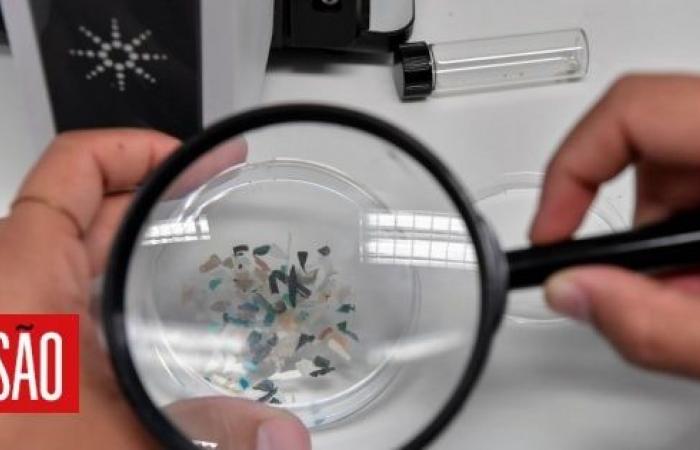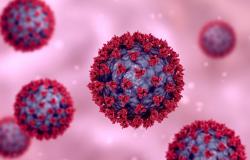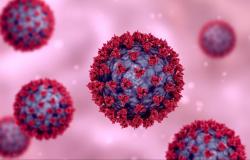There are more and more studies that have found microplastics, small fragments of plastic that result from the degradation of larger plastics or those manufactured in smaller sizes, in the most varied places, including in the snow at the top of Mount Everest.
But what has researchers on greater alert are those found in food, water and the air around us. A study published in February this year in the journal Environmental Research found that, of all samples with animal and vegetable proteins analyzed, 90% contained microplastics.
To carry out this study, the team analyzed more than a dozen commonly consumed proteins, including beef, breaded shrimp and other types of shrimp, breasts and nuggets chicken, pork, seafood, tofu and other plant-based meat alternatives. Researchers concluded that breaded shrimp contained by far the highest number of microplastics; you nuggets herbal products took second place and nuggets chicken came in third place.
The researchers further estimated that the average exposure of North American adults to microplastics ranges between 11,000 and 29,000 particles per year, with an estimated maximum exposure of 3.8 million microplastics per year.
Rice, fruit and vegetables
A study carried out by researchers at the University of Queensland, in Brisbane, Australia, concluded that for every 100 grams of rice eaten, three to four milligrams of plastic are consumed, but the number jumps to 13 milligrams per serving in the case of instant rice. . Researchers believe, however, that by washing rice, it is possible to reduce plastic contamination by up to 40%.
In 2020, two studies found that micro- and nanoplastics are present in the vegetables and fruits we eat, and that apples and carrots are the most contaminated foods.
One of the studies, published in the journal Environmental Research, was carried out by a team of researchers from the University of Catania, in Italy, and compared six different varieties of food (apples, carrots, pears, broccoli, potatoes and lettuce), coming from different locations. . The food was cleaned and peeled, except broccoli and lettuce, before being placed in the blender. They were then dehydrated in the oven and analyzed.
“For the first time, we detected microplastics (MPs) in edible fruits and vegetables. The results open a new scenario, both in environmental and medical sciences”, explained the study authors, adding that “MPs represent a current public health concern, as toxicity has not yet been fully investigated”.
The second study, published in the journal Nature Sustainability shortly afterwards, discovered that it is through water absorbed by the roots that micro and nanoplastics “enter” food.
Research carried out in 2021 concluded that fruits and vegetables can absorb microplastics through their root systems and transfer them to the plant’s stems, leaves, seeds and fruits.
Neither salt nor sugar escapes
A study from January this year, carried out by researchers at the University of Andalas, in Indonesia, detected microplastics in table salt, having identified up to 33 particles per kilogram. This represents, according to the team, an ingestion of more than a thousand microplastics every year.
Last year, an investigation concluded that coarse Himalayan pink salt, extracted from the ground, contains the most microplastics, followed by black salt and sea salt.
A 2022 study also defined sugar as “an important route of human exposure to these micropollutants”.
Tea bags are also responsible for releasing large amounts of plastic, a team of researchers from McGill University in Quebec, Canada, discovered. According to scientists, preparing tea with just one plastic bag releases around 11.6 billion microplastics and 3.1 billion nanoplastic particles into the water.
In January of this year, a study published in the journal PNAS concluded that water from plastic bottles contains up to a hundred times more tiny plastic particles than previously estimated. By using innovative technology, scientists recorded an average of 240,000 detectable plastic fragments per liter of water, after testing the product from several popular brands.
“If people are worried about nanoplastics in bottled water, it is rational to consider alternatives, such as tap water,” one of the study’s authors, Beizhan Yan, told the AFP news agency.
Microplastics are less than five thousand micrometers, which represents five millimeters, while nanoplastics are less than one micrometer (one thousandth of a millimeter). They are so small that they can enter the blood system and therefore organs such as the brain or heart.
Research into its consequences on ecosystems and human health is still limited, but some studies have already shown its harmful effects, for example on the reproductive system.
Furthermore, researchers have discovered that microplastics have a significant impact on our digestive system and can travel from the intestine to the tissues of other organs, such as the kidneys, liver and even the brain.
Tags: foods microplastics
--





